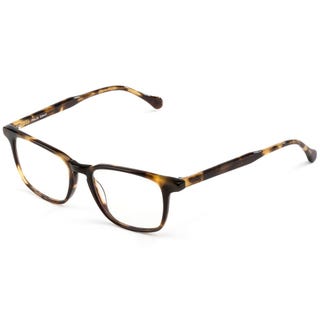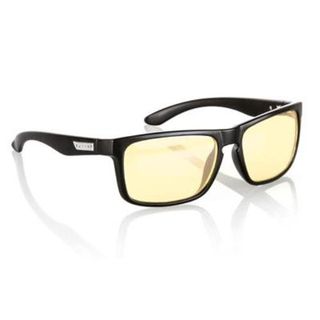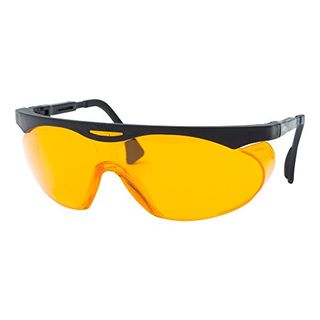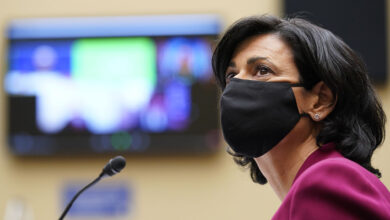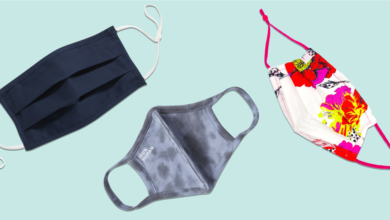Blue Light Glasses Review – Do Blue Light Blocking Glasses Work?
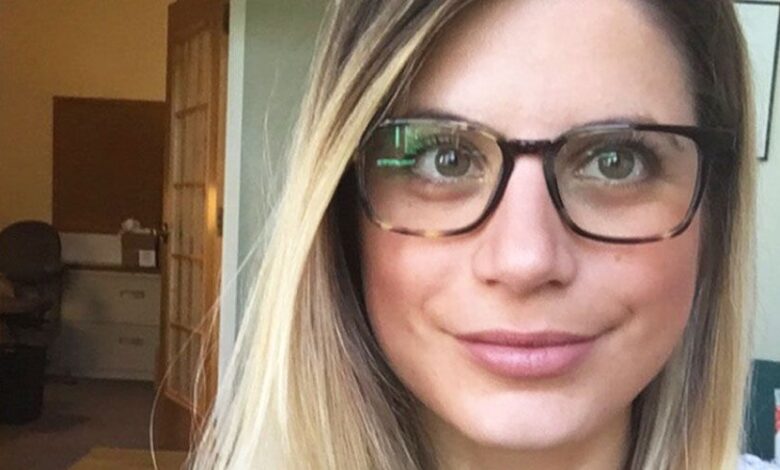
Editor’s note: Glasses that block blue light have become increasingly popular over the past few years—especially during the COVID pandemic, when we found ourselves stuck at home staring at our computers all day long. But experts including those at the American Academy of Ophthalmology (AAO) and the American Macular Degeneration Foundation say there’s no solid evidence that blue light from electronic devices causes any harm. And yes, while studies have shown that exposure to intense blue light from the sun can raise your risk of cataracts, macular degeneration and other eye conditions, there is just not enough light emitted from your laptop, iPad or phone to cause damage or strain, the AAO has concluded. One large review found a lack of high-quality evidence that blue light blocking glasses to anything to improve sleep, alleviate eye fatigue, or protect eye health.
Of course, anyone who has stared at their fourth Zoom of the day knows how tired the eyes can get from constant computer use, but the AAO says that is due to the way we use our devices rather than the light emitting from them. They recommend sitting an arm’s length away from your screen, taking frequent breaks (look away from your computer for at least 20 seconds every 20 minutes) and keeping lubricating eyedrops nearby (if your peepers tend to get dry). You can also improve your sleep by reducing screen time before you hit the hay.
If you’re still curious about blue light glasses and want to give them a try, there’s no harm—you can find plenty of inexpensive and stylish options to test out. In fact, that’s what writer Gina Tomaine did. Here’s what she had to say about her experience:
I’d heard of blue light blocking glasses before: They were yellow, ugly, and not worth the laughter I would get from both roommates and coworkers if I wore them regularly.
But, I had a problem: For my job, I needed to spend a minimum of eight hours a day staring at a computer screen. Plus, unfortunately, in my downtime after work, I would often find myself staring at another, smaller screen: the rectangle of my iPhone, which would constantly beam more blue light into my face.
I often felt like my eyes were red and tired by the end of the day, and wouldn’t feel the ache begin to lift until I finally turned off my devices. According to the American Optometric Association, 58 percent of Americans suffer from digital eye strain (DES), primarily from their laptop and desktop computers, but also from cell phones and tablets.
Blue light itself isn’t a bad thing. It’s everywhere, including in sunlight. Researchers have determined that blue wavelengths — at the high end of the light spectrum, right before UV — are beneficial during daylight hours because they boost attention, reaction times, and mood.
Until fairly recently, humans were mostly exposed to natural light during the day and darkness at night. But now we’re constantly bathing in artificial light, most of it blue. Studies have found that too much exposure to blue light at night suppresses the secretion of melatonin, a hormone that regulates sleep cycles.
A study in the Journal of Adolescent Health showed that when a group of young boys wore orange glasses while looking at their phones for a few hours before bed, they felt “significantly more sleepy” than when they wore clear glasses. Another study conducted with 20 adults had similar findings. Admittedly, these were small studies, but the findings are intriguing.
Here’s what I learned from wearing blue light blocking glasses for a week.
Blue light glasses don’t have to be ugly.
The company I tried, Felix Gray, is a newer brand. Their glasses filter out the higher end of the blue light spectrum, so the lens don’t look yellow. They also add an anti-glare coating on top to cut down on digital eye strain.
The glasses are also adorably chic, with options to add magnification if you need it. I opted for Nash frames in the “Whiskey Tortoise” pattern with blue light filtering and no magnification. The experiment was on.
They made me more aware of my screen time.
I usually only wear (non-light-blocking) glasses when I’m driving. I found that when I had to wear my blue light glasses every time I was looking at a screen, it made me more aware of just how often I was looking at a screen. I found myself surprised by how often I pulled out my laptop after I got home from work, or just mindlessly scrolled through my phone.
As a result, I found myself getting more intentional about putting the phone away, and actually sat on the porch and read more in the evenings. Even though my eyes were still working by looking at the pages of a book, giving them a rest from one more screen (the one I would typically be watching Netflix on) helped a ton, and I slept better afterwards.
I found other ways to dial back on blue light.
Since the glasses made me more aware of blue light, I tried remedying the issue further with small fixes. My iPhone is now set for “Night Shift” from 9 p.m. to 7 a.m. The Night Shift function alters the colors of the phone’s display to the warmer end of the color spectrum, so you’re exposed to less blue light that way.
To do this yourself on an iPhone, you can go to Settings > Display & Brightness > Night Shift, and set the time you usually start getting ready for bed. (You can also download apps that do this on other phones.)
I also zeroed in on non-screen sources of artificial blue lights. I learned that while LEDs are also increasingly popular as room lights, they’re not all the same. Warm white bulbs with less blue tend to work better at night than cool white ones. There are also multiple bulbs that that can change the intensity of a light’s colors with an app, or you can buy reduced-blue LED bulbs for warmer lights in bedrooms.
Wearing them was totally worth it.
My eyes felt more rested at the end of the day (probably from the reduced screen time and glare) and looked visibly less red and tired. Plus I got tons of compliments on my new glasses.
I would recommend these to anyone concerned about their digital eye strain — though I would also recommend trying to cut down on on LED lighting and screen time at night as much as possible. You can also try the 20-20-20 rule at work and at home: When working on a screen, every 20 minutes look at something 20 feet away for at least 20 seconds, an exercise recommended by the American Optometric Association.
As for how much I liked my blue light glasses? I’m finished with my story — but I’m still wearing them right now.
If You Want to Try Blue Light Blocking Glasses
Here are a few good options depending on your preferences and price range, including the ones I tried:
This content is created and maintained by a third party, and imported onto this page to help users provide their email addresses. You may be able to find more information about this and similar content at piano.io
Source link




